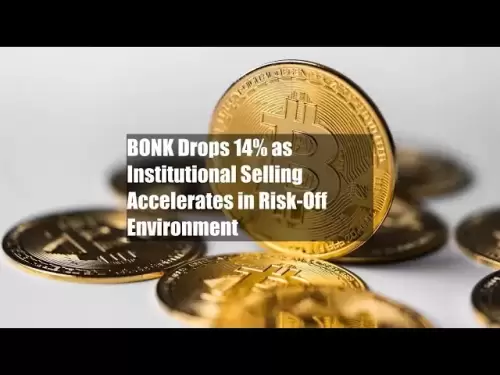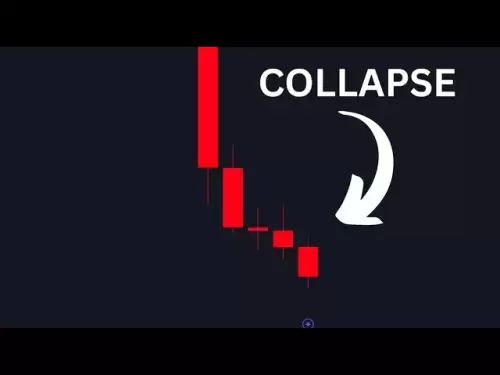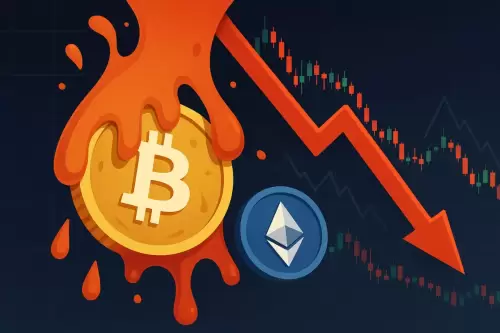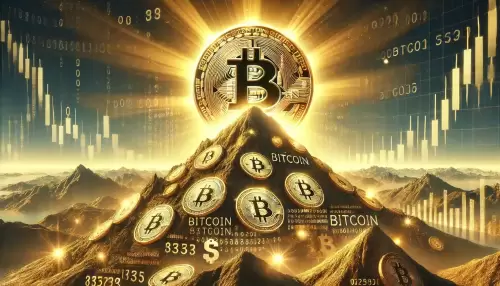 |
|
 |
|
 |
|
 |
|
 |
|
 |
|
 |
|
 |
|
 |
|
 |
|
 |
|
 |
|
 |
|
 |
|
 |
|
Cryptocurrency News Articles
If Trump Fires Powell, What Happens to Crypto?
Apr 26, 2025 at 01:16 am
Recent months have seen the ebb and flow of a certain pattern: US President Donald Trump will take some objectively harmful action
Recent months have seen the ebb and flow of a certain pattern: US President Donald Trump will take some objectively harmful action to the US economy, and the markets will crash. Seeing this, Trump has turned to Jerome Powell, chair of the Federal Reserve, and now demands he lower the Fed Funds Rate — the rate at which the Fed lends money to banks — in order to stimulate the economy. And the steely-eyed Powell will say “No.”
This is because Trump wants to lower rates, as doing so is an effective cash injection into the United States economy, stimulating activity and lifting the market. This, he feels, will make him appear successful. Powell, on the other hand, wants to follow rigorous economic standards to setting rates to carefully balance the Fed’s dual mandates of maximizing employment and maintaining stable prices.
He also wants to maintain the Fed’s independence from political pressure and, crucially, maintain the Fed’s *appearance* of independence from political pressure. If the markets believe that the central bank’s independence has failed in the US, it may become more difficult to sell US Treasury Bills, the United States’ sovereign debt. That is a problem in the fundamental sense that the US will have to pay more to borrow money, making it poorer — but it is an especially acute problem now because the US already has an enormous, $30-trillion pile of debt which it has to periodically refinance.
If it is forced to refinance at higher rates because markets do not trust the US government anymore, then an ever greater percentage of GDP will be absorbed by the cost of interest, and, as the kids say, the United States will be *cooked.*
That dance takes us to now. Last week, Trump repeatedly intimated that he would like to fire Powell, and the market didn’t like it. On Monday, Trump provoked a crash by calling Powell a “major loser” on Truth Social. In response, Treasury Secretary Scott Bessent has reportedly voiced concerns with the risks of firing Powell to Trump, who seems, for now, to have acquiesced, stating Tuesday that he would not fire his Fed chair.
Still, this process feels more like a spiral than anything else, and many market watchers are waiting for the next shoe to drop. That forces the question: if Trump does go through with his base instincts and axes Powell, what will be the result? In particular, what effect will this have on the cryptocurrency industry?
Cracking the Fed
It bears mentioning that the President is not supposed to be able to fire the Fed chair at will. Section 10 of the Federal Reserve Act of 1913 states that “each member shall hold office for a term of fourteen years from the expiration of the term of his predecessor, unless sooner removed for cause by the President.”
This language may appear ambiguous, but in the 1935 case Humphrey's Executor v. United States, the Supreme Court ruled that the Constitution does not give the President an “illimitable power of removal” and so the President’s removal power is limited by statutory language.
This decision ratified the concept of “independent agencies,” which reside within the executive branch, but have independent authority. While a number of agencies have this characteristic, including the SEC, the CFTC, and the FTC, the Fed is the most important.
Economists do not think much about the political control of central banks. Politicians have relatively short-term incentives, thinking in years or election cycles. This inherently pushes them to prefer short-termist policies, of which hot cash injections are the purest form. However, fiscal and monetary policy are delicate arts that often animate painful policy choices.
In a classic example, Richard Nixon pressured then-Fed chair Arthur Burns to pursue expansionary monetary policy in the lead up to the 1972 election, believing that it would help his reelection odds. Nixon won that election in a landslide, but soon followed catastrophic “stagflation” that crippled the United States economy for a decade, and indeed may still be felt in the industries which hollowed out during that period.
Contrast this with the policies of Paul Volcker, who, after this devastating period of stagflation, implemented a vicious series of rate increases between 1979 and 1987, which caused the “Volcker Shocks”, a series of painful recessions. However, the effect of this policy was to eventually strangle inflation and herald in the boom times of the 90s, facilitating Bill Clinton’s remarkable fiscal policy.
No politician could have made these choices, none will in the future, and that is the rub. Economists — and, crucially, markets — believe deeply that the Fed must remain independent or else the entire economic fabric of American society risks collapse. This is no hyperbole — nations with politically controlled central banks like Weimar Germany, Peronist Argentina and Venezuela have experienced such crippling hyperinflation that it led variously to multigenerational geopolitical backsliding, reports of citizens starving
Disclaimer:info@kdj.com
The information provided is not trading advice. kdj.com does not assume any responsibility for any investments made based on the information provided in this article. Cryptocurrencies are highly volatile and it is highly recommended that you invest with caution after thorough research!
If you believe that the content used on this website infringes your copyright, please contact us immediately (info@kdj.com) and we will delete it promptly.






























































